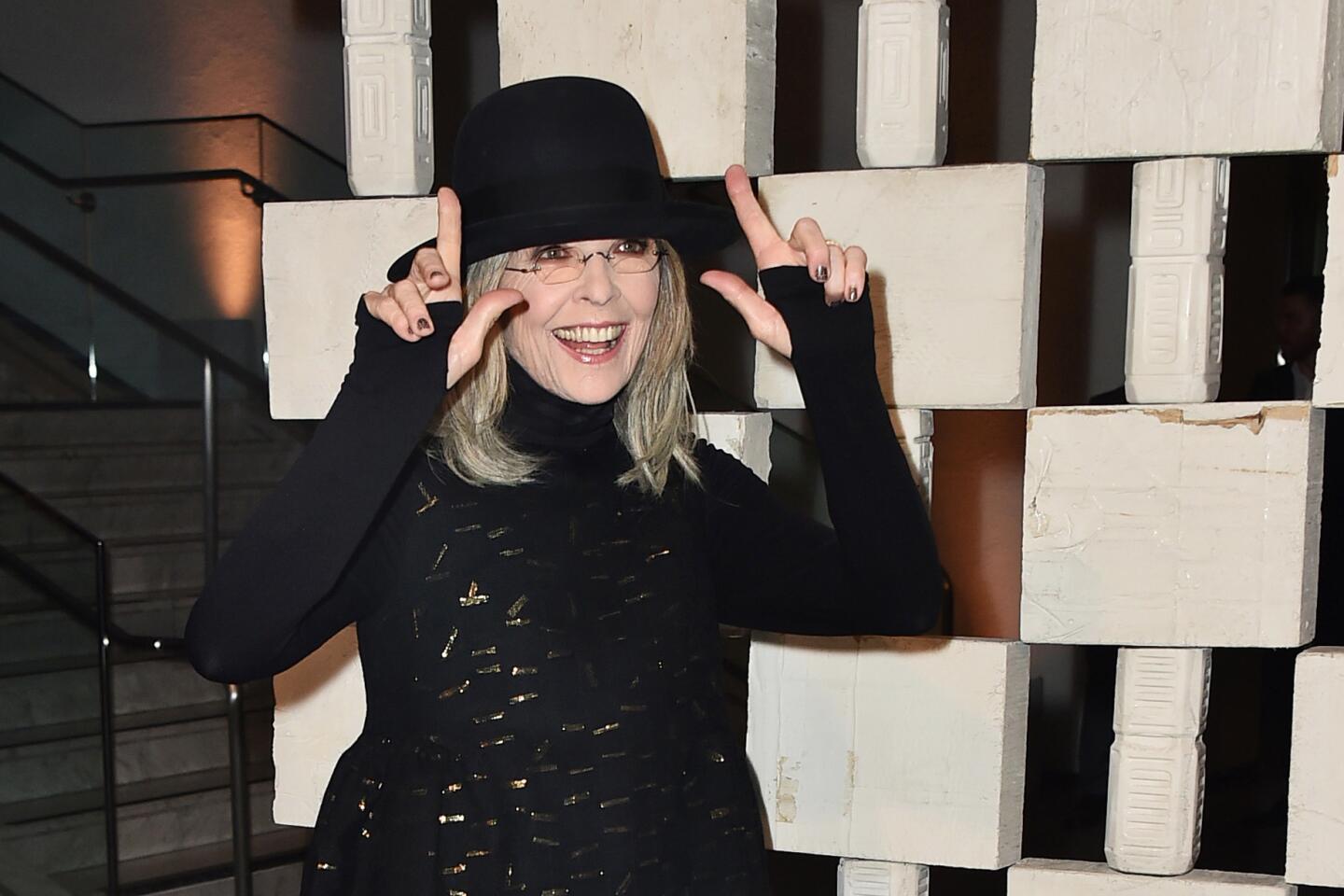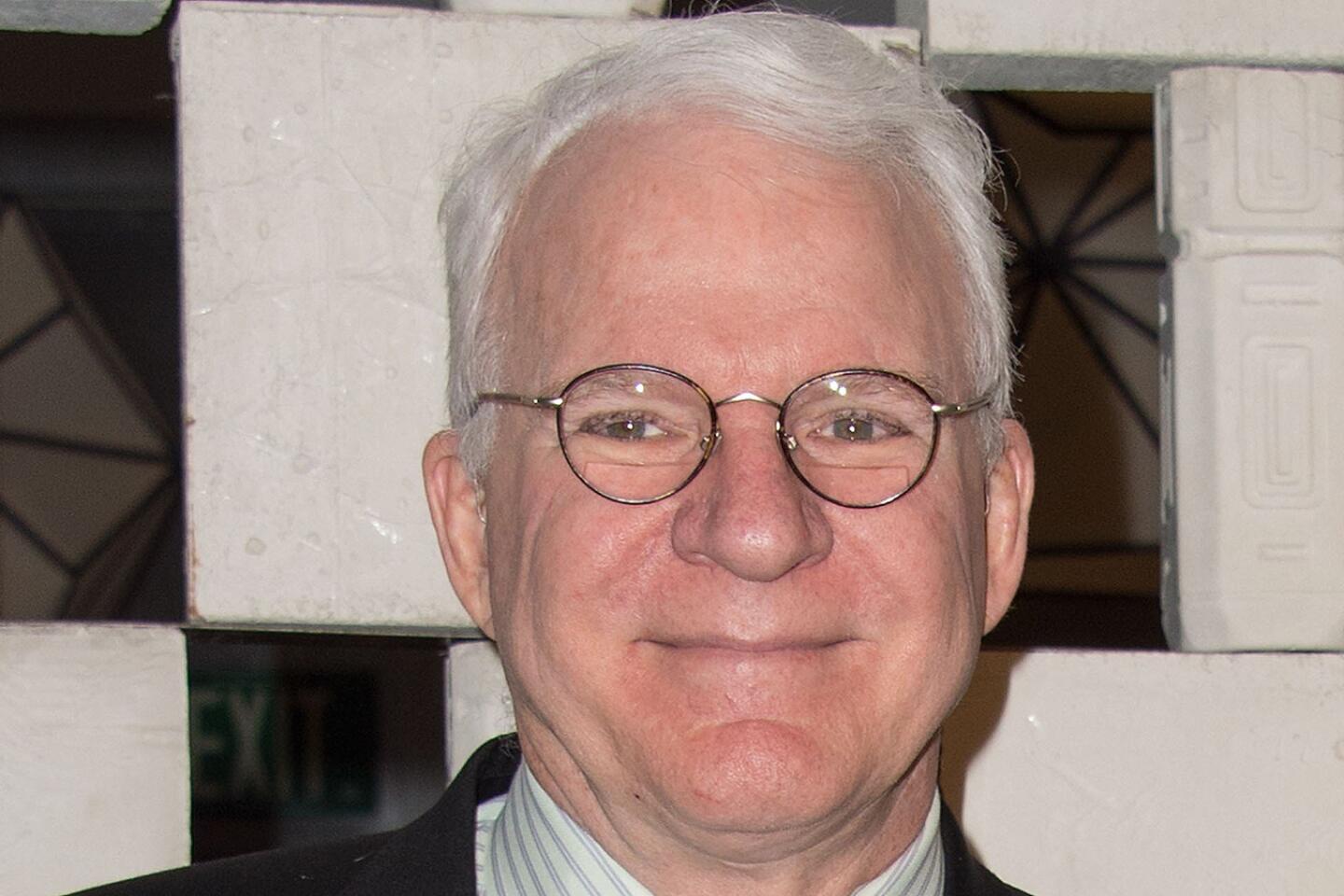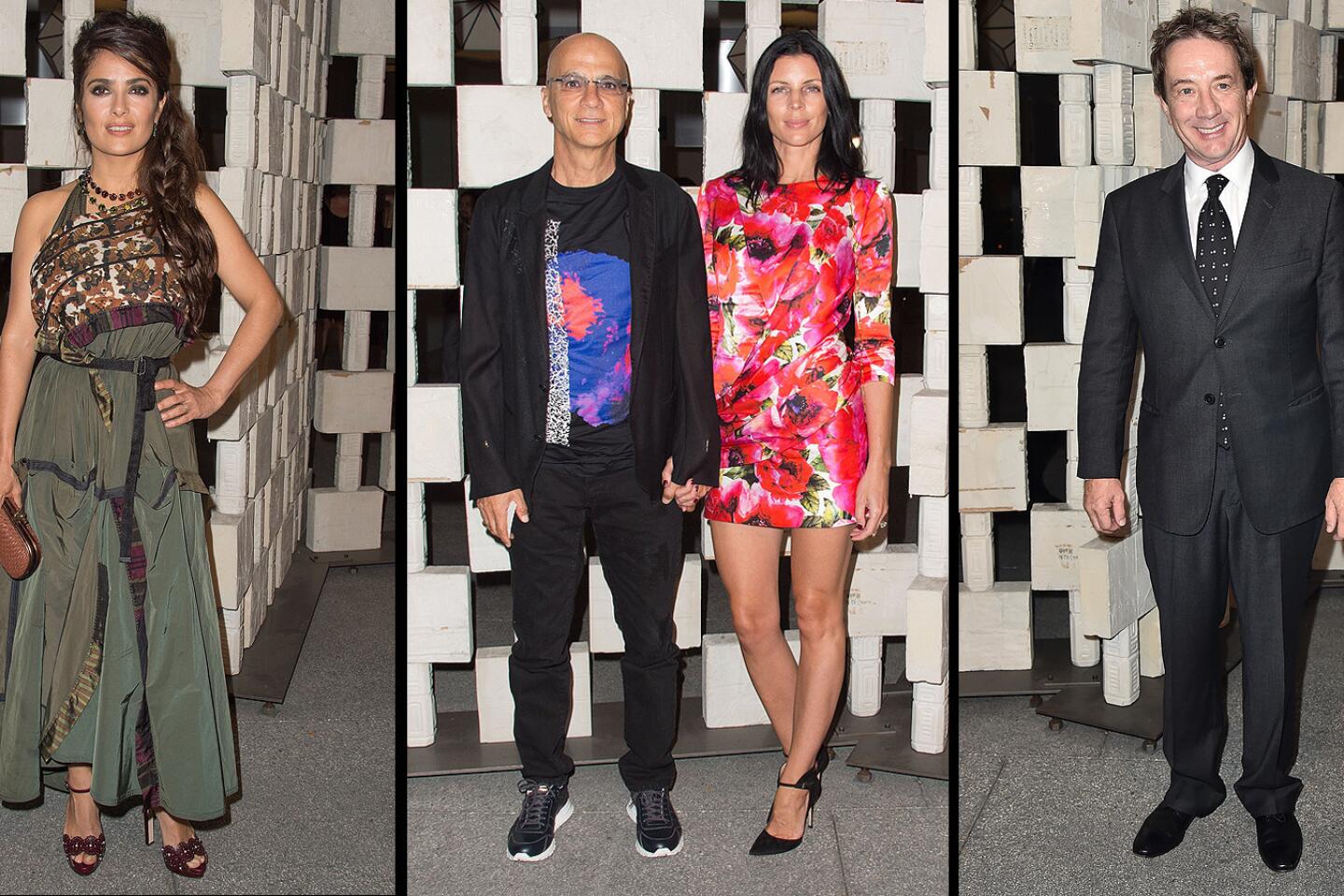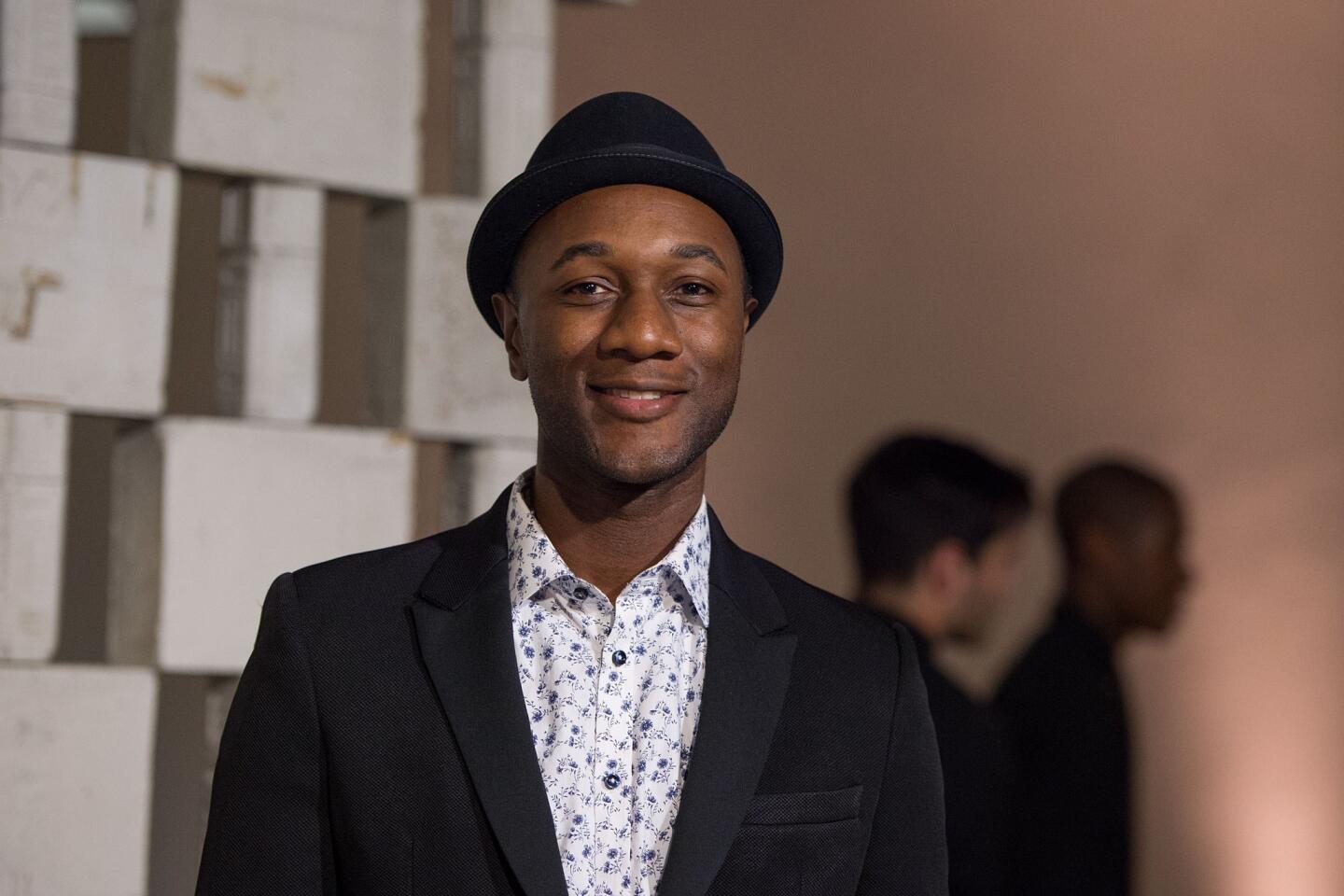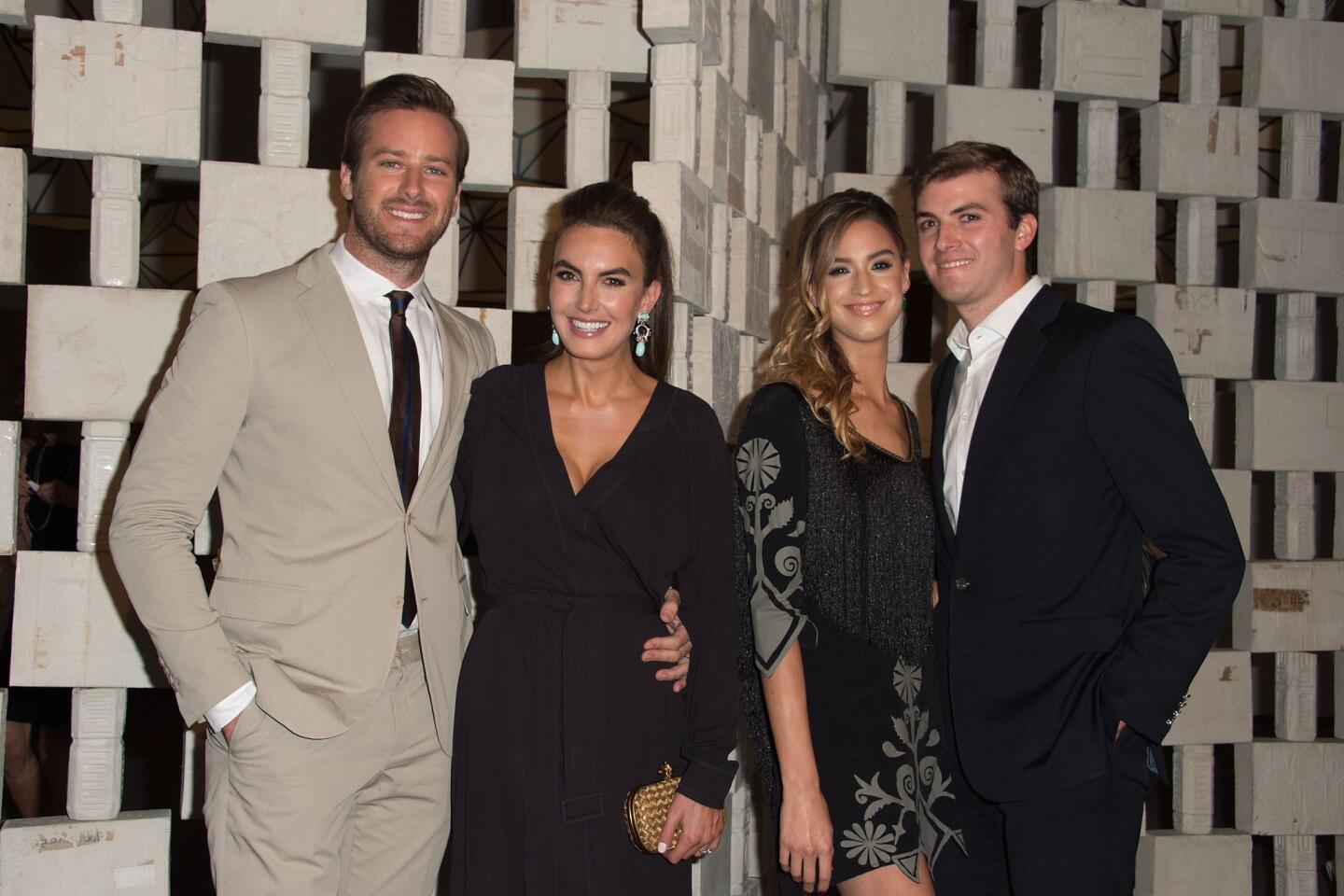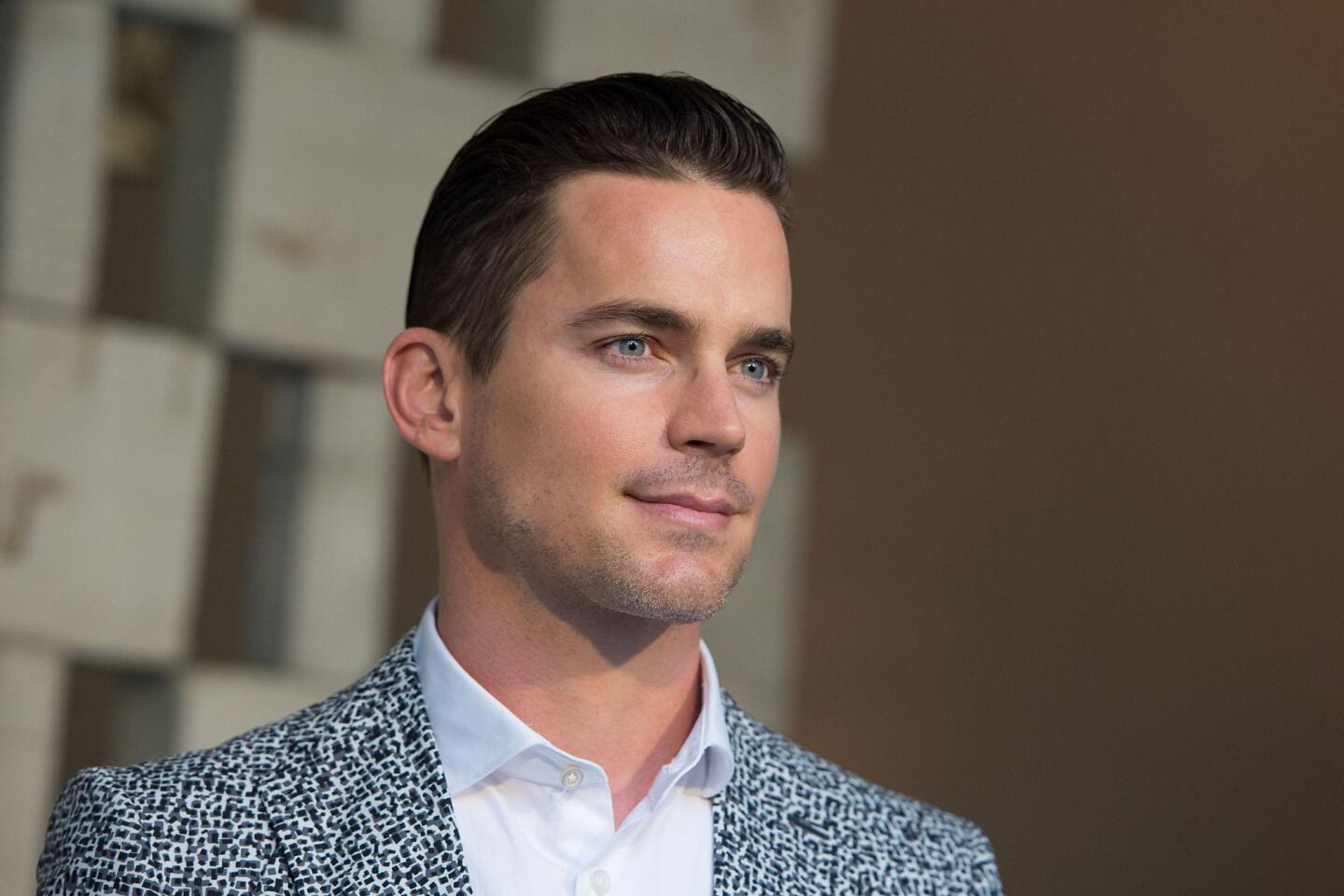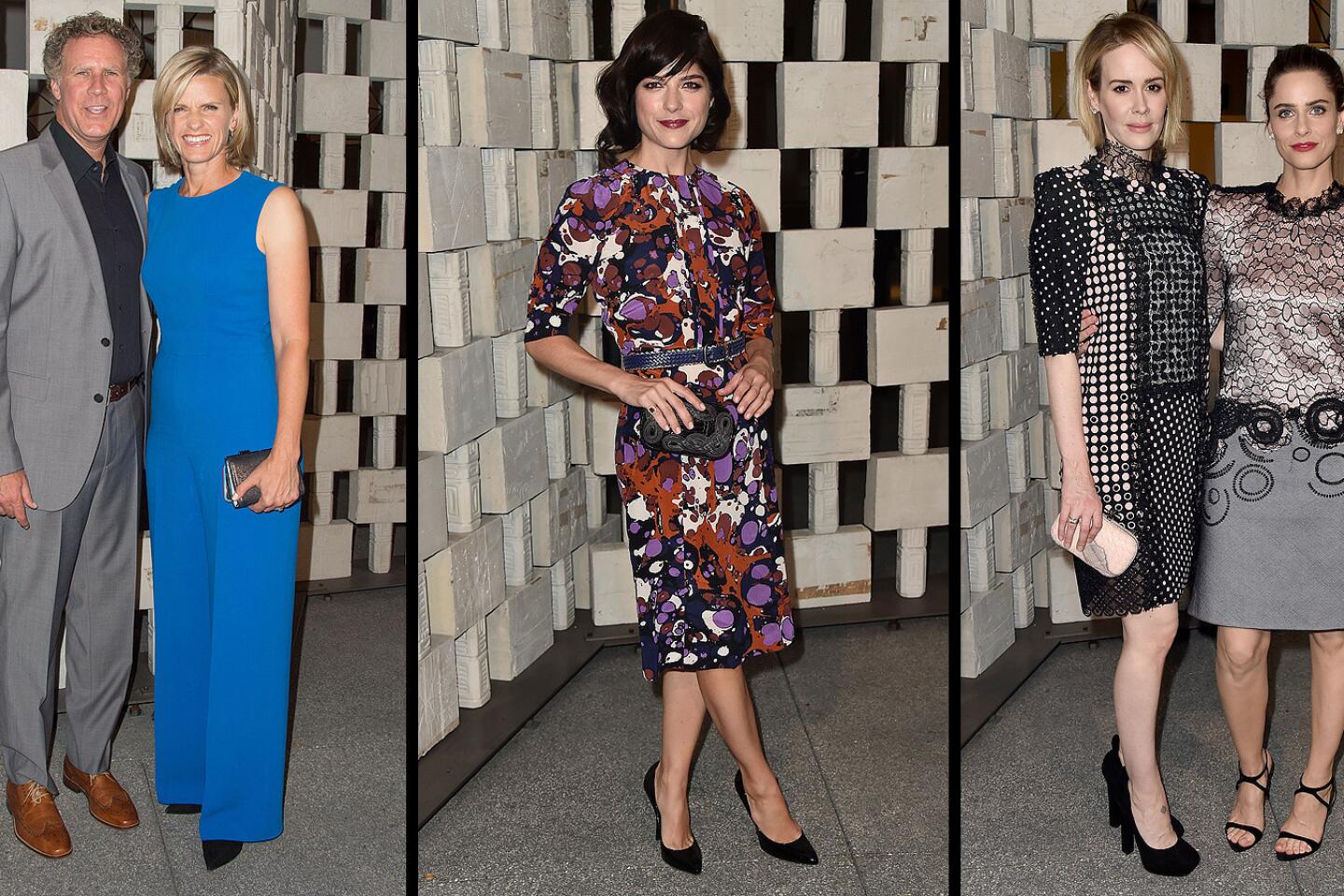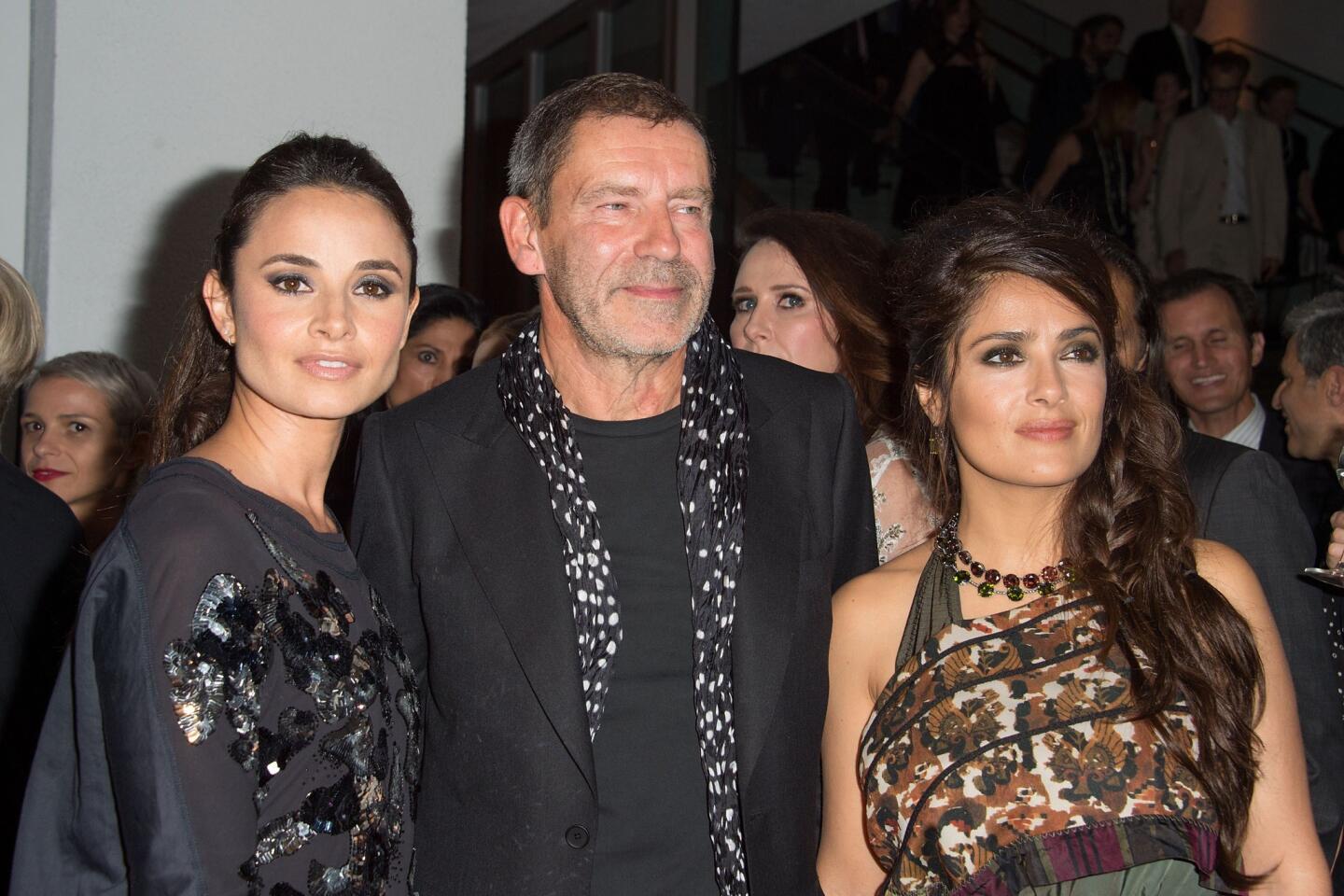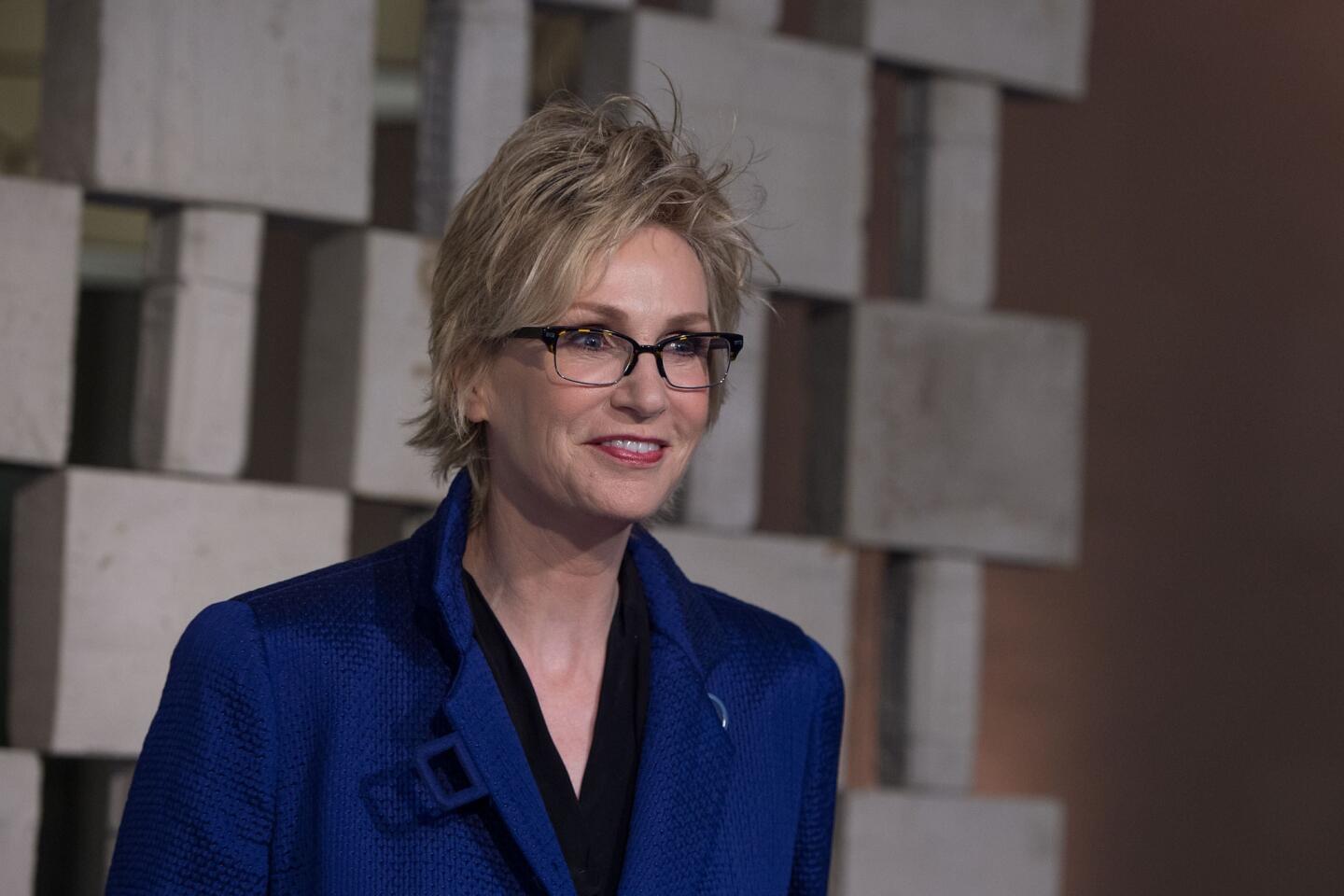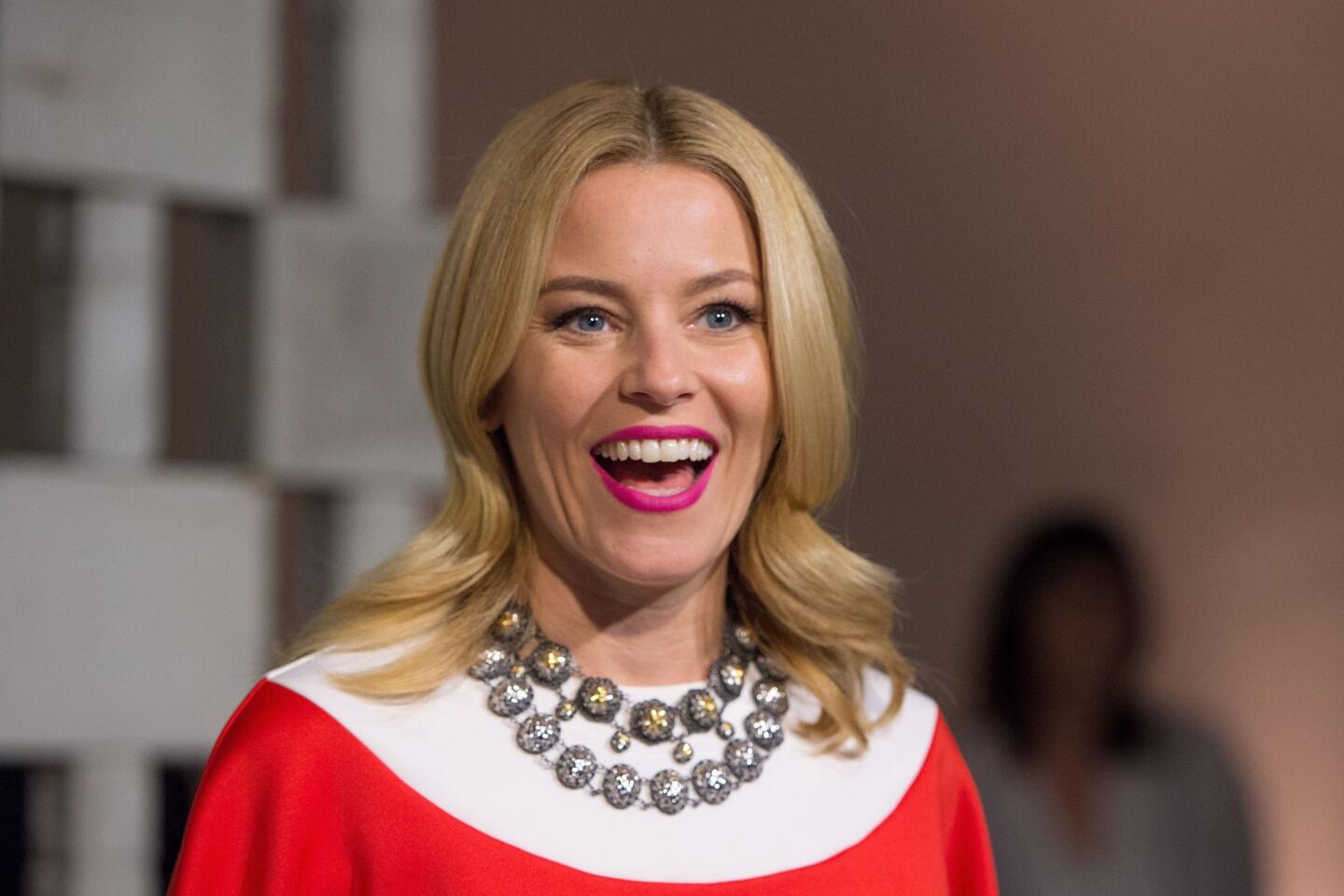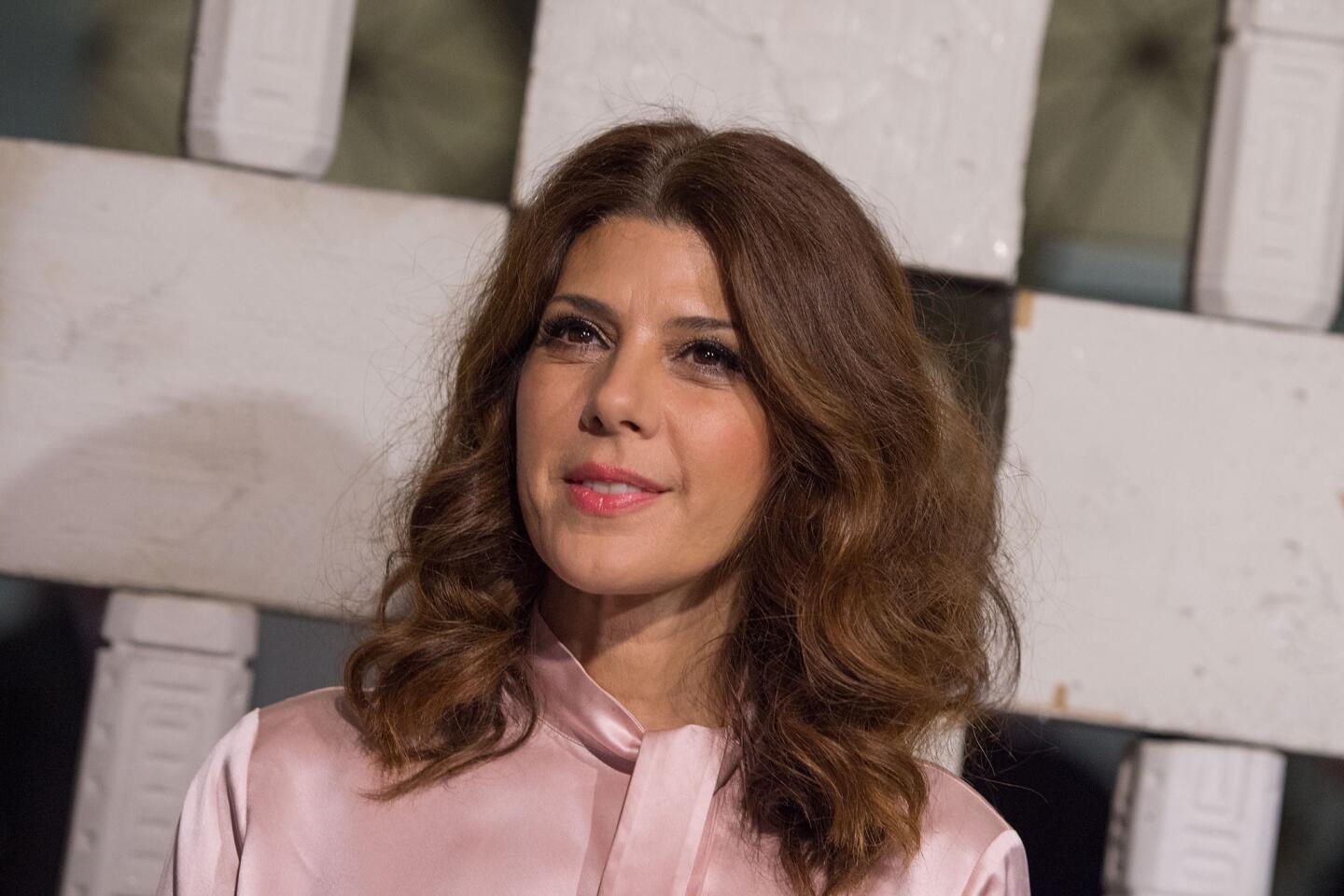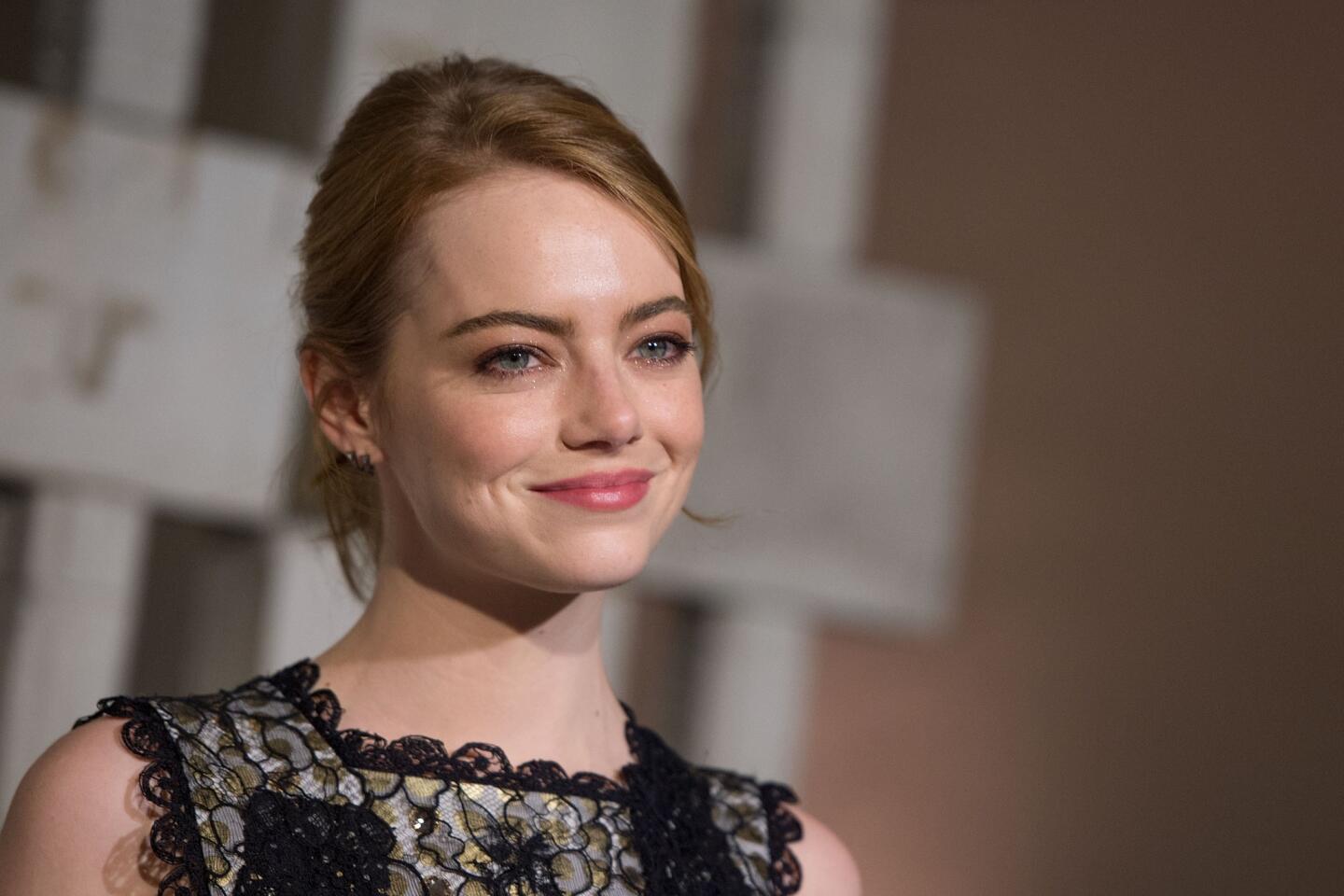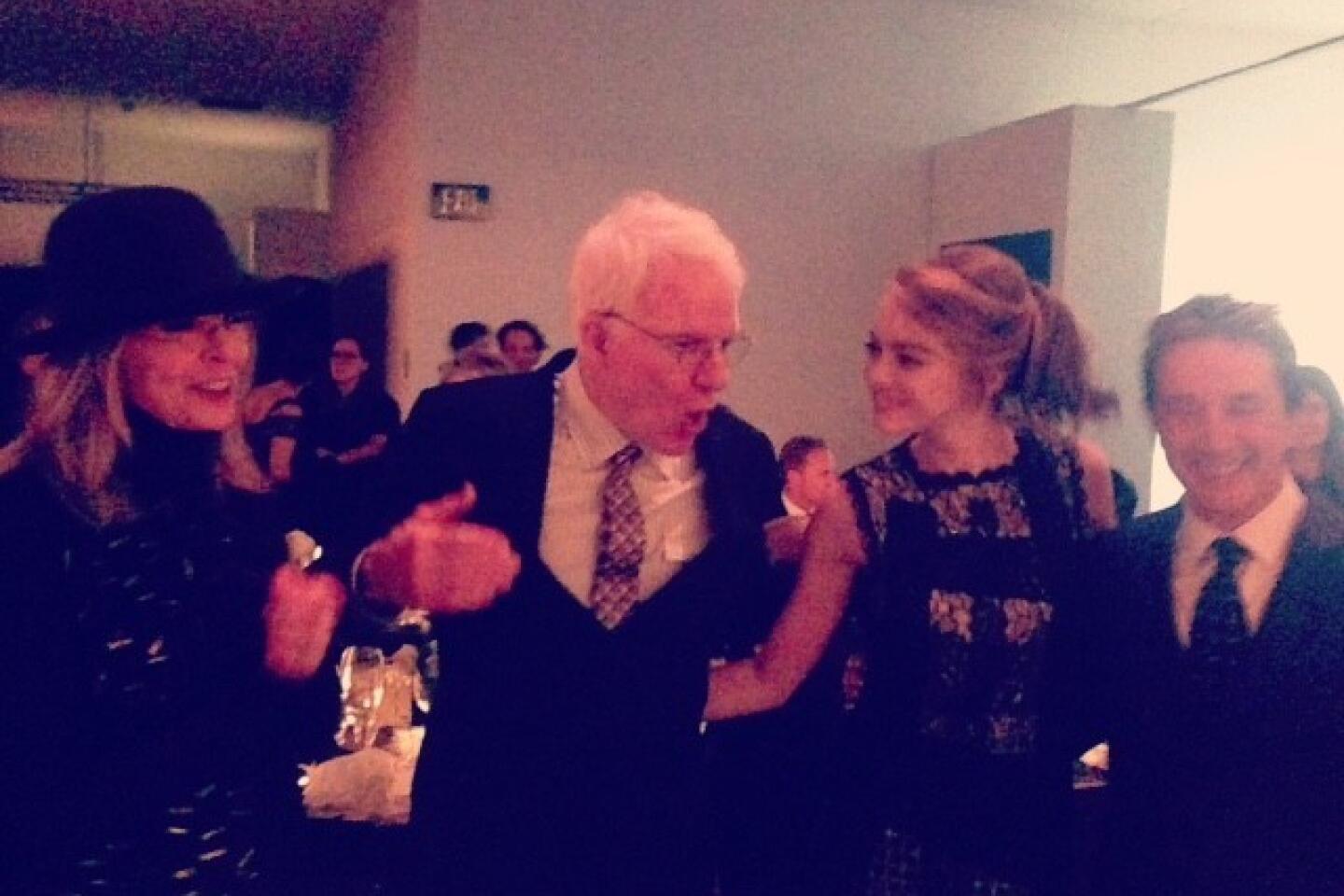Hammer Museum gala: Where Aloe Blacc, Paul McCarthy, Julia Roberts cross paths
Steve Martin rushed to the edge of the stage at the Hammer Museum’s annual gala on Saturday evening in Los Angeles, just after hip hop singer Aloe Blacc finished performing a three-song set for a crowd of about 600 people.
“You were great, just great, Martin enthused. “I didn’t realize I was sitting at the table with a true artist, a genius.”
“Thank you, really, thanks,” Blacc said, seemingly in shock over the moment.
SIGN UP for the free Essential Arts & Culture newsletter >>
“I wasn’t aware of him before,” Martin had confessed a few minutes earlier in an interview. “He was so soulful and beautiful, he had such great style.”
Blacc’s social justice-inspired numbers were new to Martin, who sat, transfixed, during the musical performance. Similarly, the quiet, geometric, jewel-toned landscapes of Canadian painter Lawren Harris -- the subject of a Martin-curated exhibit opening Sunday at the Westwood museum -- were new to most of the evening’s gala attendees. And they had nearly as significant an effect.
“Stunning, beautiful,” master of ceremonies Jane Lynch said upon entering the Harris gallery during the pre-dinner cocktail reception. “Just stunning.” Then: “Royal blue!” she cooed, sweeping her arm over her blue blazer and gesturing to Harris’ painting rendered in the same hue.
The annual gala, which honored actress Diane Keaton and artist Paul McCarthy, began with cocktails and previews of the Harris exhibition, “The Idea of North,” and of “Uh-Oh: Frances Stark 1991-2015,” a midcareer survey of the L.A. artist also opening Sunday.
A string quartet played for guests, including Marisa Tomei, Selma Blair, Patricia Arquette, Martin Short, Salma Hayek, plus museum directors and curators from the Getty, Museum of Contemporary Art, Los Angeles County Museum of Art and the new Broad. They were joined by artists Mark Bradford, John Baldessari, Glenn Kaino and Catherine Opie, among others, all wandering the gallery level, overlooking an elegantly decorated courtyard that was glowing with flickering candles and Fellini-esque tree lights.
The Harris gallery was fairly quiet and serene as guests perused the ethereal works, as if awestruck. The Stark gallery, featuring video installations, drawings, collages and paintings, was alive with chatter and frenetic energy, no one more amped, it seemed, than the artist herself.
“It’s overwhelming but completely satisfying,” she said of the exhibition opening. “I’m just delirious.”
About guest of honor McCarthy, Stark added: “I’m a big fan. I remember when Mike Kelley invited Paul to do a lecture at ArtCenter back in the early ‘90s. I was a student there.” It was like Kelly had learned from McCarthy and was bringing “this amazing person to the table,” Stark said. “Like: ‘You guys don’t even know!’ That’s how I learned about Paul.”
There was no shortage of love for Keaton.
“She’s directed me twice,” said Arquette, who attended the gala with her boyfriend, artist Eric White. “I love her -- as a human being, as an actress. She’s a moving work of art herself, a true independent spirit.”
Gala co-chairs Julia Roberts and husband Danny Moder hadn’t seen the exhibits yet upon arriving, but Roberts had opinions about Keaton.
“She’s an icon, she’s a master of her craft,” she said, adding that Keaton had been a personal influence “for her acting, for her fashion, for the amazingness of her life.”
Heading to dinner, Keaton -- wearing a short, black cocktail dress, laced up boots and a black fedora -- seemed pleased if a bit characteristically befuddled by all the attention being bestowed upon her.
“I’ll tell ya, I’m an art fan, but even bigger fan of Annie’s,” Keaton said of Hammer director Ann Philbin. “Boy, she’s turned it around for the Hammer. But why I’m here, I really have no idea!”
Philbin said the choice to honor Keaton was simple: “She’s a creative force, and that’s what we do here. We honor creative forces.”
During the Suzanne Goin-catered dinner of a baby beet and lentil salad and grilled halibut, Philbin announced that the evening had raised $2.5 million for the museum. She also announced that the Hammer would be organizing a major exhibition of McCarthy’s drawings, though she didn’t specify a date.
Mayor Eric Garcetti gave a speech in which he called L.A. “the most creative place on the face of the Earth ... the most diverse collection of human beings ever put in one place.” Then, he added: “Go Dodgers, go Hammer.”
In his tribute to McCarthy, artist Matthew Barney, who has exhibitions up at MOCA and Regen Projects gallery in Los Angeles, said McCarthy was an artist who’s “willing to go deep. … There’s a dizziness in his repetition, which is very clear, but a loneliness. The framework he constricts is sinister by design. His work is critical of the world … but at the core of his work, there’s a startling joy.”
McCarthy’s speech was nothing if not dizzying, in the most poetic way. Taking the podium and reading off of his phone, the artist launched into a staccato, spoken-word riff that lasted more than 10 minutes and incorporated seemingly free-associated words and phrases touching on L.A., Hollywood, alternative art and ‘60s culture, LSD, Andy Warhol and Reaganomics, as well as his friends the late artists Chris Burden and Kelley.
“Well, my phone went black and I was drunk, so there,” he joked back at his table afterward.
Later, at the bar, actor and museum honorary director Armie Hammer, great grandson of museum founder Armand Hammer, was so wowed by McCarthy’s speech, he recapped it for a friend. “It was just so free flowing and fluid,” he said. “It was refreshing, there was this sort of automatic writing nature to it.”
Artist Mark Bradford said he found McCarthy’s speech “powerful and moving, like real performance art.”
Back onstage, toward the end of the evening, Lynch introduced Martin, who then introduced actress Emma Stone, who then paid tribute to Keaton. “It is no secret that I have adored Diane Keaton from afar,” Stone began, later calling her inspiring, outspoken and original.
Keaton broadened the conversation: “Art links us to one another and pushes us to our boundaries,” she said, later adding, “for me, it’s about a new way to see the magic of imagination, and pain, beauty.”
After Blacc wrapped up his set, he took one last look around and commented, in an interview offstage, that the songs he’d performed that evening -- especially Marvin Gaye’s “What’s Going On” -- seemed fitting for an event so full of cultural awareness and good cheer.
“All my songs were message songs,” he said of the performance. “Underdogs triumphing over adversity or social and political disparity between the rich and the poor. Tonight -- art, music, a good cause -- tonight just feels like we’re doing something.”
Twitter: @debvankin
More to Read
The biggest entertainment stories
Get our big stories about Hollywood, film, television, music, arts, culture and more right in your inbox as soon as they publish.
You may occasionally receive promotional content from the Los Angeles Times.
